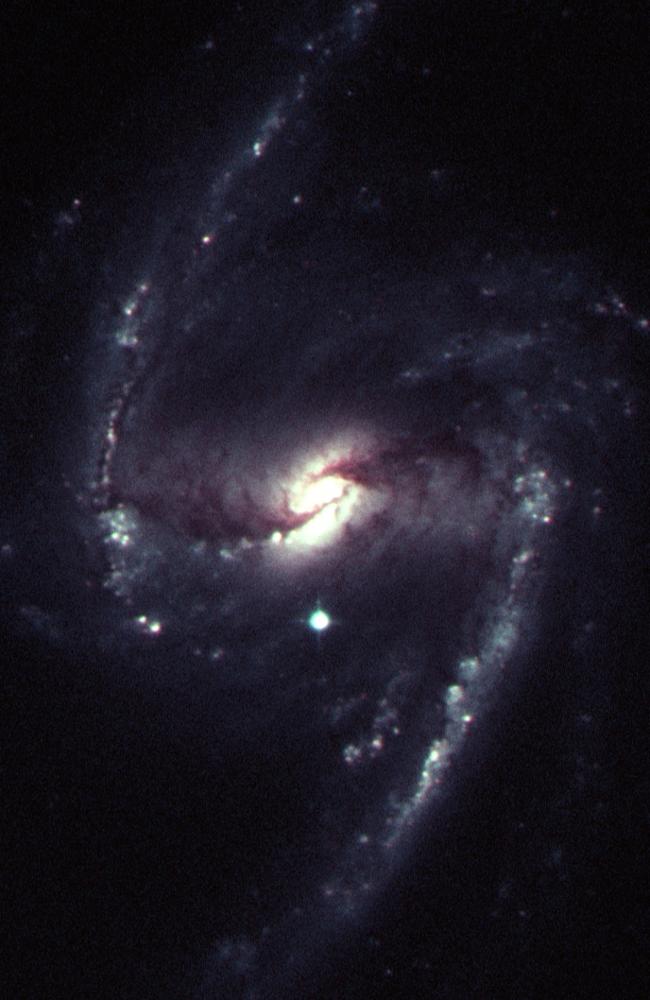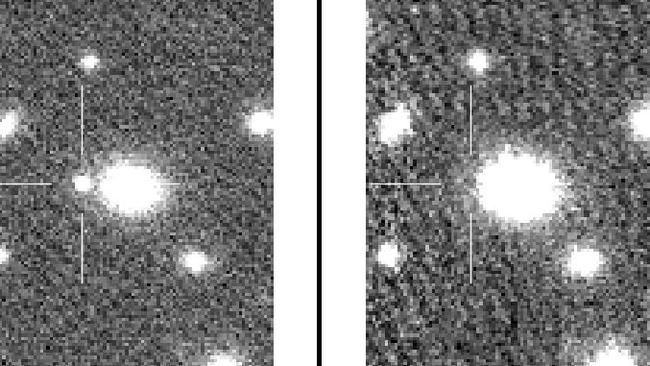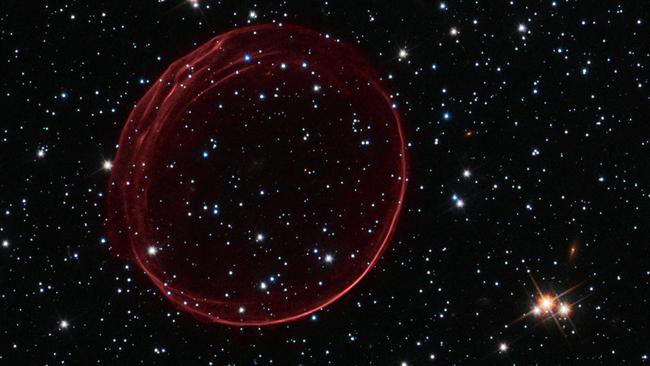Random member of public discovers star that predates dinosaurs
A RANDOM member of the public just made a discovery that predates the dinosaurs. It all came down to a tiny speck in this image.
A RANDOM member of the public has just discovered a star that disappeared almost one billion years ago. And they did it by effectively playing a children’s game.
The discovery comes from a revolutionary project by the Australian National University, which opened up a map of the universe to the public and asked people to find a supernova by playing a giant interstellar game of “spot the difference”.
As a result, one of the 700 volunteers found a suspicious looking dot and within 24 hours researchers from ANU had determined it to be a supernova 970 million light years away – namely a star that exploded 970 million years ago.
In other words, the star exploded even before the dinosaurs walked on Earth. And we just saw it this week.

The discovery was made thanks to a giant interstellar game of “spot the difference” which has been launched by the ANU in an effort to measure the universe.
Supernovae, which are “as bright as 100 million billion billion billion lightning bolts”, are used to track how the universe is growing and accelerating because scientists can use the brightness and fading of the light to measure how far away from earth they are and how fast they are moving.
Volunteers access a web portal on Zooniverse.org to search images taken by the giant SkyMapper telescope. The new images are then compared to an old image of the sky and checked for any differences. Such as, for example, an exploding star.
In this case it was a tiny little speck that appeared on this thumbnail image below — the original pictures are 300 megabytes each — that was identified as a “type Ia” supernova, the exact kind used to measure the growth of the universe.

On the left is the latest image captured just a few nights ago, with the “new” 970 million-year-old supernova highlighted in the crosshairs. On the right is the reference image taken a couple of years earlier. The new spot was identified by a member of the public and within 24 hours researchers had confirmed it was indeed the type of supernova they were looking for.
Co-lead researcher Dr Brad Tucker from the ANU Research School of Astronomy and Astrophysics said the discovery was hugely significant.
“The supernova is about 970 million light years away, meaning that it exploded before the dinosaurs were even on the Earth,” he said.
“This is the exact type of supernova we’re looking for to measure properties of and distances across the universe.”
The exploding star, one of seven potential supernovae so far reported and another 18 being tracked, has already been named “SN2017dxh”.
“Supernovae have boring names,” fellow co-lead researcher Dr Anais Möller said.
Dr Möller said the project has resulted in over 40,000 classified objects in more than 1,300 images.
And the amateur discoverers will go down in space history: The first three people to find a previously unknown supernova will be formally listed in a report to the International Astronomical Union.

The 1.3-metre Skymapper telescope at the ANU Siding Spring Observatory is sweeping the skies of the southern hemisphere looking for supernovae and other phenomenon.
Volunteers can scan the new images online looking for differences and then note the discrepancies for the researchers to follow up.
The type Ia supernova is favoured by astrophysicists because it creates a nice uniform glow that makes it easier to measure distance and speed, and thus track the rate at which the universe is expanding, as well as finding out more about the mysterious “dark energy” that is believed to cause the universe’s acceleration.
Incidentally, the “I” in “Ia” is in fact not the letter I but the Roman numeral for one, which astronomers still use because their practices are almost as ancient as a billion-year-old supernova.
If you want to solve the eternal riddle of life, the universe and everything, you can participate at www.zooniverse.org/projects/skymap/supernova-sighting. Or, if you prefer, you can now just go back to your cup of tea.




